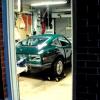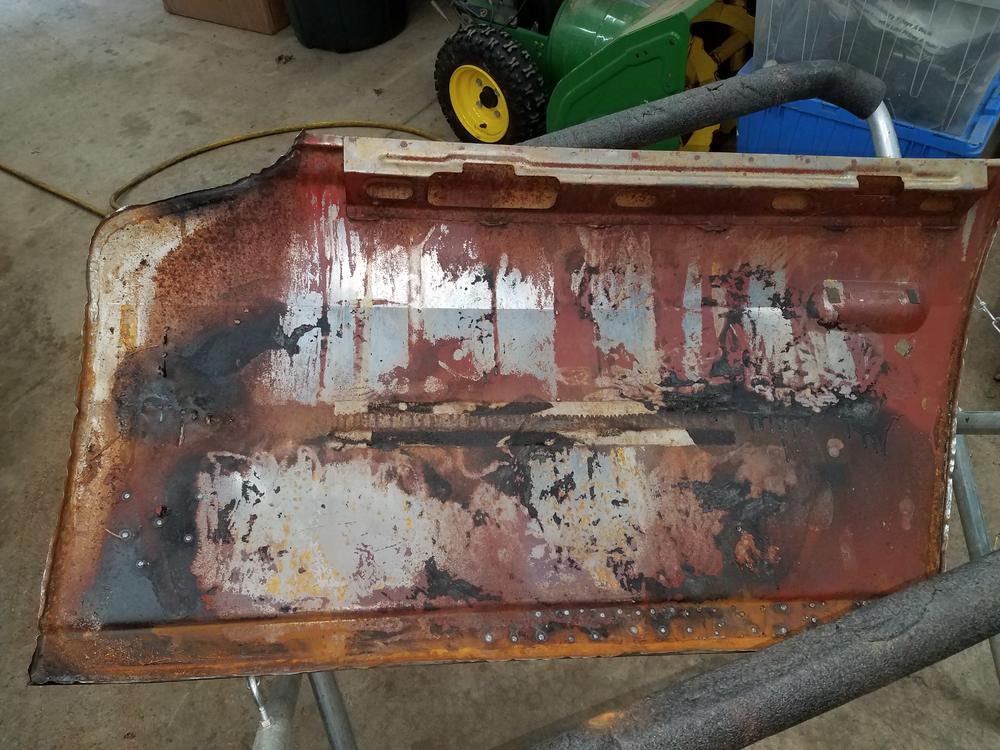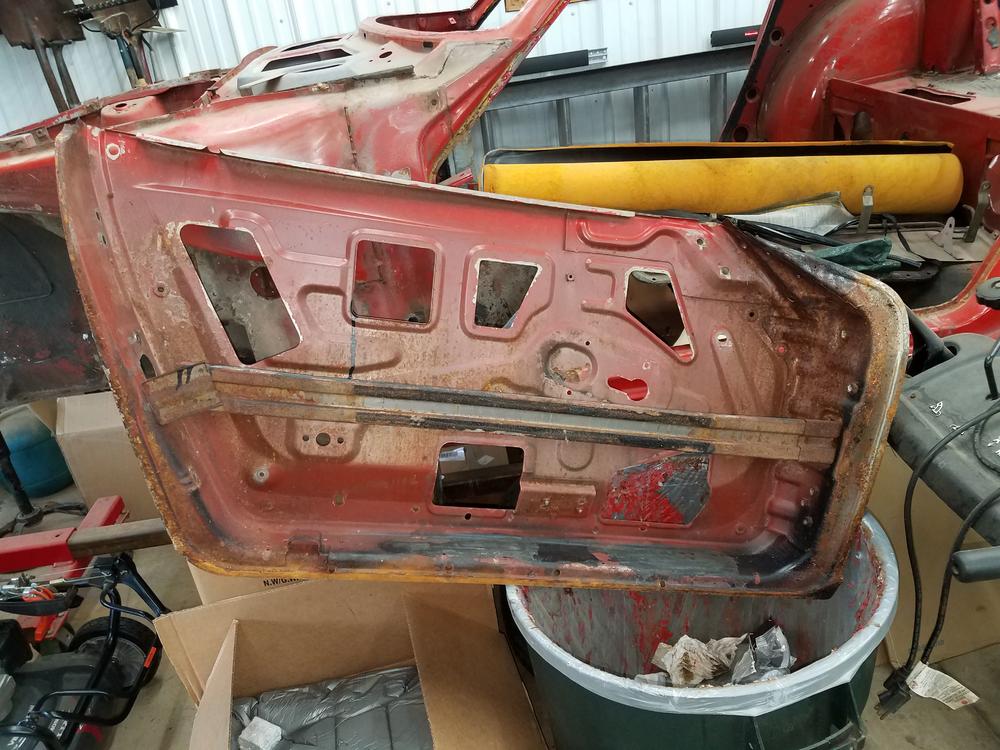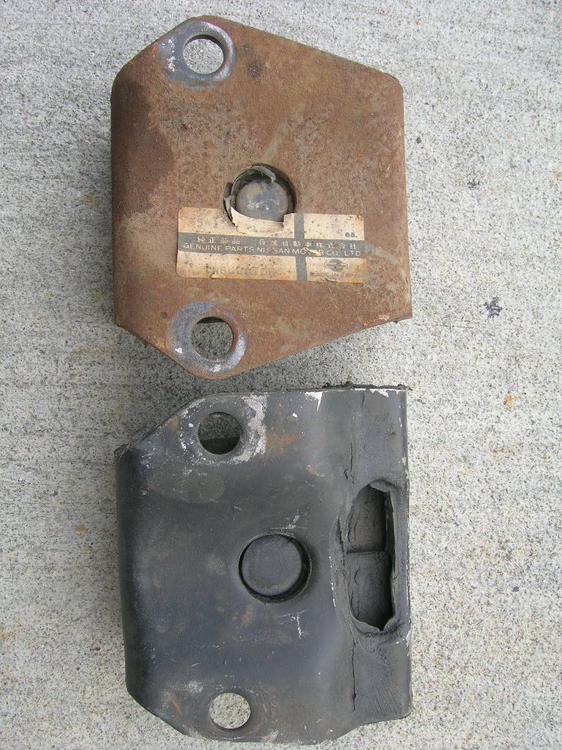Everything posted by Namerow
-
Picture of check 240z valve location please?
Second that. The top two nuts are hard to get started on their threads when reassembling. Kneel on garage floor, lean in off balance, then then try to make arms reach back to the left so that two or three fingers holding nut can find their way into dark, confined recess. Wins my vote for 'Top 10 Most Difficult Fasteners'. Other nominations?
-
Cuppa Zeeeee at 7AM
Is that rust on the rocker panel of the white Z miniature?
-
Caswell Plating
Rough guess: 1/64" / 0.025"
-
Caswell Plating
ummm... Can you define what you mean by, 'satisfactory'? Sometimes my parts plated brilliantly. That included a few tough-to-do parts like the hatch strikers or the e-brake linkage 'equalizer'. On other parts, the plating was what I would describe as indifferent. Not terrible, but not award-winning either. I cannot put my finger on the reason. I produced very few results that look like what other members are having returned to them by commercial platers. My best results were what I'll call 80-percenters. As a general comment, my plating efforts took a noticeable step forward when I finally broke down and bought the Ca$well chemical for my electrolyte, replacing the DIY solution of vinegar and epsom salts that I let myself be tricked into using by some overly-enthusiastic motorcycle hobbyist website. The change to the electrolyte was accompanied by borrowing a controllable current/controllable voltage power supply from our ever-generous friend, Grannyknot. Only after making these two adjustments did I start to get worthwhile results. And after that, I found that a regular dose of Ca$well's 'brightener' solution made the critical difference between a shiny vs. dull outcome. 'Moss Boss' comes in the form of a 4"-wide roll of thick foil. I made hoops (by soldering the overlapping ends) whose diameter was slightly under the diameter of my electrolyte bucket. I stacked three of the hoops, one on top of another, so that the entire inner wall of the bucket was lined. The result was a 360-degree anode, which I hoped would mitigate masking issues during plating. I suppose it did, but I didn't have the time or patience to compare this set-up with a uni-directional anode. I do not recall experiencing problems with 'impurities'. It's my understanding that a powdery, granular plate occurs on the surface of the part if you set your current too high. But I wouldn't call that an impurity issue. Moss Boss is relatively cheap, so I encourage you to try it. If you can find it, that is. It's disappeared from retailers' shelves here in Canada because it's considered to create unacceptable environmental (groundwater) issues. A patient google search might turn up some manufacturer's info on purity level. As you know from my previous commentaries, I came away from my DIY plating experiences somewhat less enthusiastic than when I started out. My positive outcomes were very rewarding, but they went 50-50 with not-so-positive outcomes. If I had been able to decide where I was going wrong, I would have kept at it, but I could just never figure out why some of my parts just wouldn't plate properly -- even when I took them all the way back to the blasting cabinet stage. It was almost like certain regions of the part's surface had been poisoned by something (maybe residual impurities in my blasting media?). I did not get good results from using a wire (brass) wheel. I suspect, the wires on the wheel were already contaminated by materials and grease/oil from previous, non-plating jobs and they just burnished that contamination into the surface of my about-to-be-plated parts. Pickling after wire-wheeling didn't solve the problem. Moral: If you're going to use a blasting cabinet, start with fresh media and blast parts only after they've been de-greased and pre-pickled. If you're going to use a wire wheel, buy a new one, de-grease it before use, and de-grease it from time to time during use. BTW, some people, as well as Ca$well, recommend a fibre wheel over a wire wheel (but I don't know why). My sense is that, overall, the process is intolerant of what I'll call 'fouling' at any step along the way -- whether it's blasting, wire-wheeling, pickling, rinsing, wire hangers, or the electrolyte bath itself. My fear is that once one of your steps gets fouled, you have to dump that liquid/media/material and start all over again. The challenge, of course, is to figure out which step got fouled. And, once you've figured that out, make sure that you don't carry the fouling back to the start of your chain.
-
1972 240Z Manifold Heat Control Thermostat
How did you get it apart?
-
1972 240Z Manifold Heat Control Thermostat
IIRC, that's just an adjuster nut. I don't think you'll get much further without 'destructive disassembly'.
-
1972 240Z Manifold Heat Control Thermostat
IIRC, it's just a typical spring-loaded, wax-pellet type check valve. There's a cut-away drawing buried somewhere in the FSM. While it is possible to screw off the end cap, it doesn't really show you too much of the inner workings (not that there's that ,much to see). I think I soaked mine in a calcium-rust-lime-remover product overnight and then put it back together. It worked OK before cleaning, and it worked equally OK after cleaning... so the cleaning was obviously an important step . I suspect that the long-term health of these valves was directly related to whether the car's cooling system was run with plain tap water rather than coolant.
-
window crank system
When you set out to find a replacement spring, note that the same spring is used for LHS and RHS door. Once you have the spring, it may not be obvious which way is 'right side up' when you go to install it on its shaft. The correct installation for both the LHS and RHS regulator is to have the hook on the free end of the spring oriented so that it bears against the bottom of the engagement tab on the main plate.
-
window crank system
Search this site for Grannyknot's write-up on refurbishing. These lift mechanisms are called 'regulators', so first go to GK's postings and then search on that word. The hard-plastic idler wheels can be replaced (with units from a cabinet drawer 'slide', IIRC). However, the mounting shaft takes a lot of load, so you'll need to either work towards a light interference fit (maybe assisted by some Loctite 'stud mount' anaerobic) or tack the end with a MIG weld. As for the spring: After the regulator is un-wound to the point where the gear rack comes loose from the pinion gear, the spring doesn't really have that much tension on it. Once the gear rack comes free of the pinion gear, the remaining spring tension will go to zero after the lever arm has rotated about another 30 degrees or so. At that point, you can just pluck the spring out of the slot in the centre shaft. When you're re-assembling, it's pretty easy to load the lever by hand so that the gear rack comes in contact with the pinion gear. At that point, you can just start turning the window crank handle to feed the gear rack back into full engagement. That said, it won't be easy finding a replacement spring all on its own. If anyone has a spare, they're probably not going to want to sell you just the spring.
- WTB 72 lower center grill support
-
First drive in the z in 25 years.....impressions.
There's one thing that still puzzles me in all of this: I owned my first Z (a 1972) from 1977 until 1981 and logged about 40 thousand miles of driving with it -- much of that at freeway speeds on regular trips between Toronto and Montreal (~ 300 miles, each way). I do not recall ever smelling exhaust fumes inside the car during those drives, nor feeling any effects while driving (which I surely would have over 4 hours of driving). The car was bone-stock and all-original (e.g. no weatherstrip replacement, no new taillight seals, no rear or front spoiler spoiler, no special exhaust tip, no replacement grommets, no caulking -- nothing). So I'm reasonably comfortable in saying that there was nothing in the design of the later-version cars (i.e. with the cabin air extractor vents located on the sail panels) that led to exhaust fumes being sucked into the cabin. Not, at least, when everything was left in original configuration and all of the grommets and seals and weatherstripping were in good shape and and the body seams were in proper alignment. In fact, I don't think that even the addition of an aftermarket exhaust system changed that, because I don't recall reading any warnings or tales of woe, back in the day, about exhaust fume issues showing up after an Abarth/ANSA/Stebro/etc. performance exhaust system had been added -- something which hundreds, if not thousands, of Z-owners did in the 1970's. I have a different opinion about the early-version cars with the cabin air extractor vents located on the hatch panel. I think that design may have been inherently weak, even when the cars were fairly new, because the open water-drainage tubes provided a secondary airflow exit (or entrance, depending on the circumstances) at an aerodynamically-undesirable location that also happened to be fully exposed to exhaust fumes caught in the 'bubble' that sets up behind the rear valence/trim panels when the car is in motion. Once the 'one-way' flaps and/or the hatch interior trim panel started to get tired, or the hatch interior trim panel was improperly installed, you had all the necessary ingredients for exhaust fumes being sucked back into the cabin -- esp. when the side windows were opened a bit and changed the pressure differential between the cabin interior and the location of the drain tube exits. I don't think this arrangement could be called a 'defect', because Nissan development engineers surely would have noticed the problem during the car's development. However, problems must have begun to be reported after the cars had been in owners' hands for a year or so. The change to the air extraction design was a costly move for Nissan and I don't think they would have taken it without figuring that they had no other choice. I wonder if anyone with 1970's driving experience with a Series 1 car would care to comment on whether they have any recollections of exhaust fumes coming up into the cabin?
-
Caswell Plating
Can I send you my parts?
-
First drive in the z in 25 years.....impressions.
Ditto on this comment, in case you missed it. This panel (plastic, not vinyl) tends to warp, opening up some pretty wide gaps along seams that are supposed to be sealed shut. It's also held in place by the usual push-pin plastic rivets and I've noticed from photos that some of these are often missing from owners' cars. Once gaps appear between the plastic panel and the inside sheet metal of the hatch, the factory's cabin-to-outside airflow scheme can be bypassed (including the one-way flaps located inside the ducts) and exhaust fumes can enter the cabin by entering the hatch cavity and then leaking past the plastic trim panel. In the factory scheme, the air extractor pathway is supposed to be the only route for air to flow from the hatch area of the cabin to the outside, and that pathway is supposed to be sealed off from the interior of the hatch.
-
First drive in the z in 25 years.....impressions.
For Series 1/'early' (take your pick) cars with the extractor vents located on the trailing edge of the hatch panel, there's one aspect of the exhaust fumes suck-back problem that I've never heard mentioned before and which might be fundamental to the design. I'm talking the drain tubes that allow rain/wash water to drain out of the two air plenum chambers (located inside the hatch cavity). Those drain tubes exit on the underside of the hatch, outboard of the weatherstrip and are therefore nicely exposed to the ambient air (and exhaust fumes) at the rear of the car. Since the air flow and air pressure back there is, shall we say, 'variable' and because the 'one-way' airflow control flaps (the ones that control airflow from the cabin into the plenums) are less than perfect -- even when new, I suspect -- there are all the ingredients in place to allow backflow into the cabin. The triggers for that backflow would be: 1) amount of side window opening; 2) air speed over the rear deck, and; c) airflow/air pressure serendipity in the region just under the hatch lip. I can't think of any easy design solution (putting one-way flaps inside the round drain tubes would be a challenge).
-
Rolling Shell with no VIN
If you think the discussion here is getting getting too pedantic, wander over the Ferrarichat.com and see how the big boys duke it out over faked and transplanted VIN's and chassis numbers. In F-car-land, certain practitioners have been accused of building complete cars around 3 square inches of metal with a frame number stamping... and then selling the results for a lot more than any S30 Datsun is ever going to raise. The debate over there often centres around whether certain well-known names in the biz were or were not actually criminals.
-
240z Door Hinge Rebuild
At what point of opening the door did you notice the drop issue? Or was it, instead, something you noticed when you were trying to close the door? (e.g. door latch wouldn't line up with the striker plate and/or the stopper ramp) Also: How many miles are on the odometer of your car? (trying to get a sense of how much use the vehicle has to see before this kind of hinge-wear problem becomes an issue needing attention) And: It appears from your photos and comments that the pin wear problem was largely restricted to the lower hinge (the one with the spring). Since the upper and lower hinges should see approx. the same loadings as they take up the wright of the door, it appears that the excessive wear in the lower hinge's pin could be related to the transverse load that the spring being applies to the top of the pin. Either that, or Nissan decided to use extra-crappy steel for the lower pin. What are your thoughts on this, having taken the door off and disassembled both hinges so that they were lying there on the bench for you to stare at? Also: Has anyone with an early Z (no spring/detent in the door hinges) noticed this kind of pin wear in the lower hinge?
-
1972 Z Brake switch / valve
Well, it was a different time and place back then, wasn't it? The concept of safety systems and warning lights was brand new (how many warning lights were there on the dash panel of a 55 Chevy?). We'd all been reading about Mercury and Gemini capsules and Mission Control and supersonic aircraft and James Bond, and it seemed like there could be no such thing as too many warning lights. Or buzzers. Or digital warning messages ('Your door is ajar.') Of course, we're much smarter now.
-
Some questions about the 240Z's Doors and Locks
I think that skinny little strip of channel steel is best referred to as a 'stiffener' rather than a 'beam' . (although it did meet the FMVSS requirement!)
-
Some questions about the 240Z's Doors and Locks
I don't think the PN change in 10-71 has to do with the addition of side impact bars. The 1970 FSM mentions a feature that I think refers to the side impact bars ("The door main unit is rigidly constructed, the outer panel is provided with two stiffeners, and thus, together with the highly rigid inside panel shape, the strength, rigidity, and safety of the rider compartment is highly improved.") and that language is repeated verbatim in the 1971, 1972 and 1973 FSM's. Curious that the FSM describes these two stiffeners ads being attached to the outer panel when, in fact, they're really attached to the inner panel (albeit, located right up against the outer panel. For reference, have a look at these photos posted recently by a CZCC member (Patcon, I think)... x FWIW, the US federal safety standard mandating side impact protection (FMVSS 214) came into effect in November 1970. It appears that the auto manufacturers had been advised well ahead that this was coming, because a quick check of in-period write-ups on US domestic models like the Chevy Camaro and Ford Mustang shows that the feature was introduced on their 1970 models. My April 1970 production 240Z has these beams. Hard to say, though, whether they were fitted to all Z's, right from the start, or introduced as a running change sometime before April 1970. Maybe someone with a very early car can chime in on this.
-
71 Z differential front mount
I hope you're right, Jim. The only early front diff mount I've seen advertised was on a Japanese website back in July and the asking price was a cool 28,000 Yen ($300+). p.s. It's ok to call it a 'Series 1' car. You're with friends here.
-
71 Z differential front mount
The mounts are quite different in shape and I've seen no one claim that the later mount (easily available) can be used in place of the earlier mount (NLA). Here are some pictures (posted by someone, somewhere -- apologies for not knowing who to credit)...
-
1972 Z Brake switch / valve
ZH wins the debate. I forgot all about those springs. And they weren't a later add-on. Here are pictures of the internals as they came out of the unit installed in my April 1970 Z...
-
Modifying a '70-71 choke knob to fit a '72
Nice. I'd thought about the possibility of carving a control knob (I need a mirror-image version for the hand-throttle lever on my car). Thanks for demonstrating that it can be done. With a finish coat of gloss black epoxy paint, it might be pretty much indistinguishable from the real thing made of plastic. Probably stronger, too . Not so sure that I have the engraving skills to carve in a logo, though. Winter project.
-
1972 Z Brake switch / valve
Not so sure about that. Obviously the movable valve/plunger/whatever will shift off its normal, centred position if hydraulic pressure drops on the left or the right side. And once it shifts off centre, it stays there. So let's say you fix the problem you had in the front or rear brake circuit. Now when you step on the brake pedal, the valve/plunger once again sees equal pressure on both sides -- so it won't move from its new, off-centre position. I'm inclined to agree with Grannyknot that it needs to be manually re-centred. Can't verify from actual experience, but, hydraulically speaking, that's the way I see it. Unless someone can come up with an alternative explanation. A couple of other comments: I disassembled the switch from my 4-70 car and it was kind of gummed up. But probably not so much that it wouldn't have shifted had I lost pressure in one of the brake circuits so that the valve/plunger was exposed to full pressure from one side only. That's a lot of force. I think the factory didn'y want anyone messing around with this switch because an internal leak caused by a botched service job could result in the front and rear brake circuits becoming connected, thereby negating the safety function of the dual-circuit braking system.
-
Some questions about the 240Z's Doors and Locks
Re door panel assemblies: No, sorry. You're looking at the wrong diagram. See items 1 & 2 on this diagram... http://www.carpartsmanual.com/datsun/Z-1969-1978/body-240z/door-panel-glass-hinge










